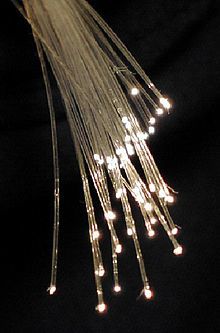Back in 2007, Gartner technology researchers found that ICT accounted for 2% of all global CO2 emissions. They also pointed out at this time that this was as much as that produced by the aviation industry.

The USA’s Initiative
The realisation that industries such as IT have a significant part to play in the CO2 emissions war, has given rise to a number of international initiatives focused on the construction of new environmentally friendly buildings. For example in North America, the USGBC (United States Green Building Council) have just had the LEED v4 rating system officially approved, and relevant trades within the industry have been advised to take note.
The initials LEED stand for “Leading in Energy and Environmental Design”, with version 4 being the latest issue. It’s all about the owners of newly constructed building being able to claim LEED v4 status, and this depends entirely on the complicity of trade suppliers. As well as providing products and services whose performance meets specifications and comply with industry best practice, they must also come up to standard in terms of meeting environmental rules and regulations.
The Global Effort
Many countries are joining the cause. Here in the UK for example we have the UK Green Building Council, Canada has the Canada Green Building Council, and Germany has the DGNB (German Sustainable Building Council). There is also a world wide body the World Green Building Council (WGBC) which seeks to provide a global lead.
The Focus will be widened to incorporate IT
The prime focus of these various bodies, has up until now, been targeted at renewable energy installations, economising on power and energy, and on environmental impact. But from an IT standpoint, the focus needs to be widened to incorporate network cabling and the overall IT infrastructure.
Existing IT Installations must not be Overlooked
But whilst most attention is paid to new constructions, we mustn’t forget existing installations, some of which have now fallen behind the times of terms of environmentally friendliness. Cloud technology is enabling many companies to address this that may not necessarily have the means otherwise to address and reduce their carbon footprint.
Existing Data Centres
Most existing, older, Data Centres are prime candidates for inspection. With the majority of Data Centres, power alone represents between 30 to 50% of their operational budgets. This includes power for cooling as well as running the equipment.
The cable raceways that house the network cabling itself need to be properly designed in order to facilitate airflow. At the time of installation, future usage considerations must be taken into account as well. When it comes to technology, future proofing should always be included in any strategies, and this now includes environmental factors.
When cabling is being modified, or upgraded, care should be taken not to leave old trunking, and old cabling in place, unless it can be modified and updated. This is due to the fact that legacy cabling can cause obstruction and block airflow. There is also an added danger with leaving old cabling in place; it may not comply with the current “Reduction of Hazardous Substances” policy. Old-style cabling may release halogen if fire breaks out, leaving a company open to possible regulatory enforcement or fines.
Twisted Pair Copper v Fibre Optic
All Ethernet cabling, from Cat5 through to the emerging Cat8 is based on a twisted pairing of copper wire. The higher the Cat number, the highest specification, in terms of capacity, speed, and shielding (and most up-to-date). But even the top of the range is still based on a copper wire construction, and copper is one of the world’s rare resources.
Fibre-optic cabling, on the other hand, does not contain any metal at all. It’s made from high quality silica or glass fibres, little thicker than a human hair. So in terms of the raw materials for its construction, it is much more environmentally friendly. As well as being able to handle much bigger payloads (more than 10 Gigabits per second), the data travels further than with conventional cabling. Whereas conventional cabling can only be used in relatively short runs (90m) before it needs boosting, fibre-optic cabling will carry data for over 5000 miles without any boosting being necessary at all.
What Cost a Green Environment?
For many SMEs, fibre-optic cabling is a step too far in terms of expense. Cost has always been a defining factor in the struggle to obtain a greener environment. As with the car, petrol has become less toxic and will probably continue doing so in the immediate future. But it’s petrochemical industry’s reluctance to forego the revenue they get from petrol that is the main stumbling block.
Fibre Optic Cabling for Small Business
In a similar way, fibre-optic cabling, although undoubtedly the best and most eco-friendly solution, remains too expensive for smaller companies, depending on where they are based in terms of office building. It will undoubtedly come down in price, as most things electronic do with time bit in the meantime, these companies will need to look to the future and see what can be done to address the company carbon footprint.
As the consumer becomes increasingly environmentally aware, the idea that a business can present itself as ‘green’ is a sound one. This means that smaller companies should look to having a survey carried out on their existing infrastructure to decide upon the best way forward, whether that be the use of cloud for infrastructure, or replacing existing cabling.
For large organisations, the responsibility increasingly lies with CIOs and high-level management to ensure that IT equipment and cabling falls into line with global expectations when it comes to environmental matters and sustainability.

